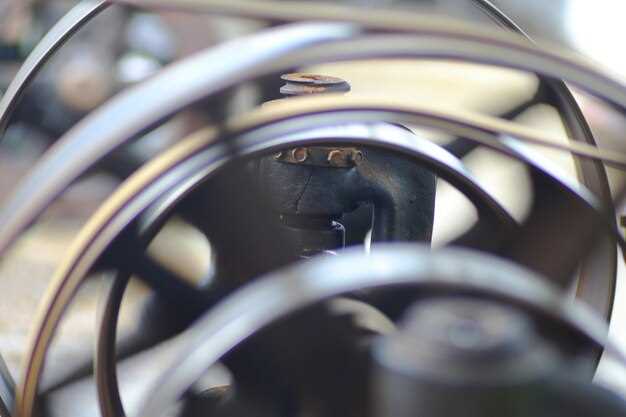
Engine modifications, often referred to as mods, play a crucial role in enhancing performance and efficiency. Understanding the key focus areas of these modifications is essential for any automotive enthusiast. A close-up examination of the critical components and modifications can bring out the distinctive features that contribute to an engine’s overall capabilities.
One of the primary focus areas in engine mods is the intake system. By optimizing airflow into the combustion chamber, enthusiasts can significantly boost engine output. This may involve upgrading air filters, intake manifolds, and throttle bodies. Each modification comes with its own set of details that need careful consideration to ensure compatibility and performance gains.
Another important area is the exhaust system. Modifications to the exhaust can dramatically impact both power and sound. High-performance exhaust headers, catalytic converters, and mufflers are just a few elements that, when altered, can enhance engine efficiency and provide a more aggressive tone. The precision in the fitting and type of materials used can make a substantial difference in overall performance.
Finally, tuning the engine’s ECU is vital for maximizing the benefits of any modifications. Custom engine maps allow for fine-tuning of fuel delivery, ignition timing, and other parameters, ensuring that every mod works in perfect harmony. Paying attention to the detail in each tuning aspect is fundamental for achieving the desired performance outcomes and reliability.
Understanding Performance Gains from ECU Tuning
ECU tuning is a crucial modification for performance enthusiasts looking to enhance their vehicle’s capabilities. This process involves adjusting the electronic control unit’s settings to optimize engine performance, fuel efficiency, and overall drivability. By modifying the ECU, you can achieve significant gains in horsepower and torque, translating into a more responsive and powerful driving experience.
One of the primary benefits of ECU tuning is the ability to extract more power from the engine without additional hardware mods. By recalibrating fuel maps, ignition timing, and boost levels, tuners can boost engine output while maintaining reliability. This fine-tuning process allows for the engine to run more efficiently, resulting in better throttle response and acceleration.
Furthermore, ECU tuning can also improve fuel efficiency. By optimizing air-fuel ratios and adjusting other parameters, drivers may experience better mileage under certain conditions, making it a practical choice for those seeking performance alongside economy. This dual benefit can make tuning a smart investment for daily drivers as well as performance vehicles.
It’s essential to consider the specific goals of your tuning project. Different modifications may require tailored ECU adjustments for optimal results. Additionally, working with experienced professionals or reputable software solutions can ensure that the tuning is done safely and effectively, maximizing your vehicle’s potential.
In summary, understanding the performance gains from ECU tuning is fundamental for anyone looking to enhance their vehicle’s performance. Properly executed, these mods can lead to substantial improvements in power delivery and efficiency, unlocking the full capability of the engine while ensuring reliability and drivability.
Optimizing Airflow with Aftermarket Intake and Exhaust Systems

Enhancing engine performance necessitates a thorough understanding of airflow dynamics. Aftermarket intake and exhaust systems play a crucial role in optimizing this airflow, providing significant gains in power and efficiency. By replacing the factory components with high-quality alternatives, enthusiasts can achieve a more aggressive air charge and improved exhaust flow.
Aftermarket intake systems are designed to minimize restrictions, allowing for a greater volume of air to enter the engine. These intakes often feature larger diameters and smoother air passages, which contribute to a more effective airflow. Additionally, many aftermarket options come equipped with high-flow air filters that enhance filtration while ensuring that the engine receives a clean, uninterrupted supply of air. This increase in air volume results in higher combustion efficiency, translating to improved engine performance.
On the exhaust side, aftermarket systems are engineered to reduce backpressure, allowing exhaust gases to exit the engine more freely. By utilizing larger pipes, performance mufflers, and optimized bends, these systems facilitate quicker expulsion of exhaust, which helps maintain higher engine speeds and enhances overall horsepower. Ensuring an efficient exhaust flow not only assists in engine performance but also contributes to a more responsive throttle, making the vehicle feel more agile.
Combining upgraded intake and exhaust systems creates a synergistic effect, amplifying the benefits of each modification. An optimized airflow path ensures that the engine performs at its peak capabilities, achieving better torque and horsepower results. Moreover, tuning the engine’s air-fuel mixture can further enhance performance, leading to more precise calibration of power delivery and efficiency.
Ultimately, optimizing airflow with aftermarket intake and exhaust systems requires careful selection and installation. Detailed attention to component compatibility and proper tuning will yield the best results, allowing drivers to harness the true potential of their engines. By investing in these upgrades, enthusiasts can enjoy a more exhilarating driving experience while maximizing engine efficiency and durability.
Evaluating the Impact of Turbochargers and Superchargers on Engine Output

Turbochargers and superchargers are two prominent engine mods that significantly enhance engine performance by increasing power output. Both systems serve the primary function of forcing more air into the combustion chamber, which allows for a more efficient and powerful combustion process.
Turbochargers utilize exhaust gases to spin a turbine connected to a compressor. This process compresses the incoming air, increasing its density before it enters the combustion chamber. The result is more oxygen available for combustion, leading to a notable increase in horsepower and torque. The boost produced by turbochargers can often double the engine’s output, depending on the specific application and configuration.
On the other hand, superchargers are mechanically driven by the engine’s crankshaft. They provide instant power because they do not rely on exhaust gases. Superchargers compress air before it enters the engine, which also increases density and enhances combustion efficiency. While they tend to produce a linear power boost, allowing for immediate throttle response, they can consume a portion of the engine’s power to operate, which may affect overall efficiency at higher RPMs.
When evaluating the impact of these mods, it is crucial to consider the engine’s design and intended use. For instance, turbochargers may produce significant lag at lower RPMs before boost kicks in, while superchargers often deliver continuous power across the RPM range. Moreover, the choice between these two systems can depend on factors like desired performance characteristics, fuel type, and specific driving conditions.
Both turbochargers and superchargers present their unique advantages and disadvantages. Understanding these details ensures that modifications align with the performance goals of the vehicle. Proper tuning and integration are essential to fully harness the potential of either system, guaranteeing an optimized engine output while maintaining reliability.





